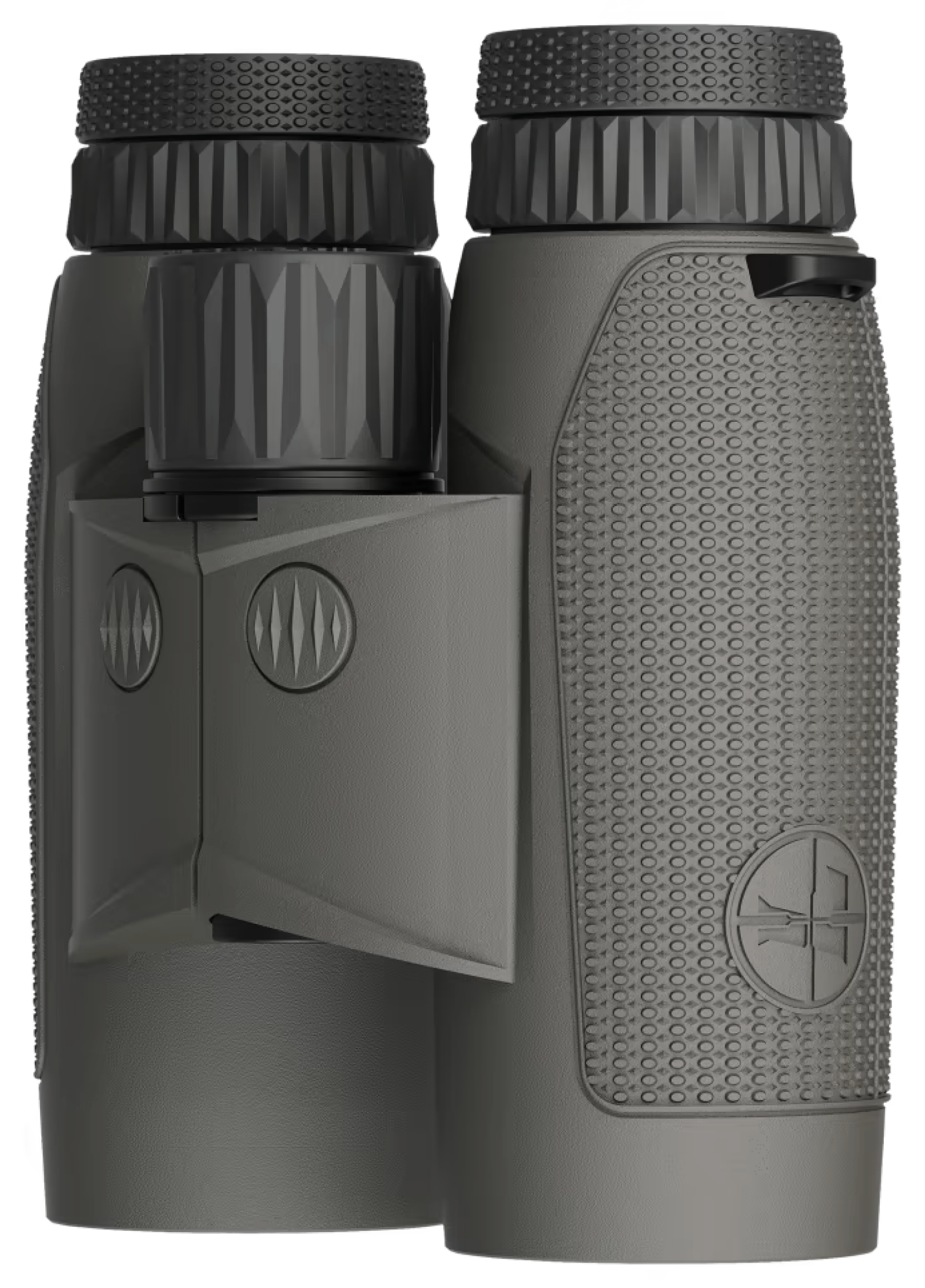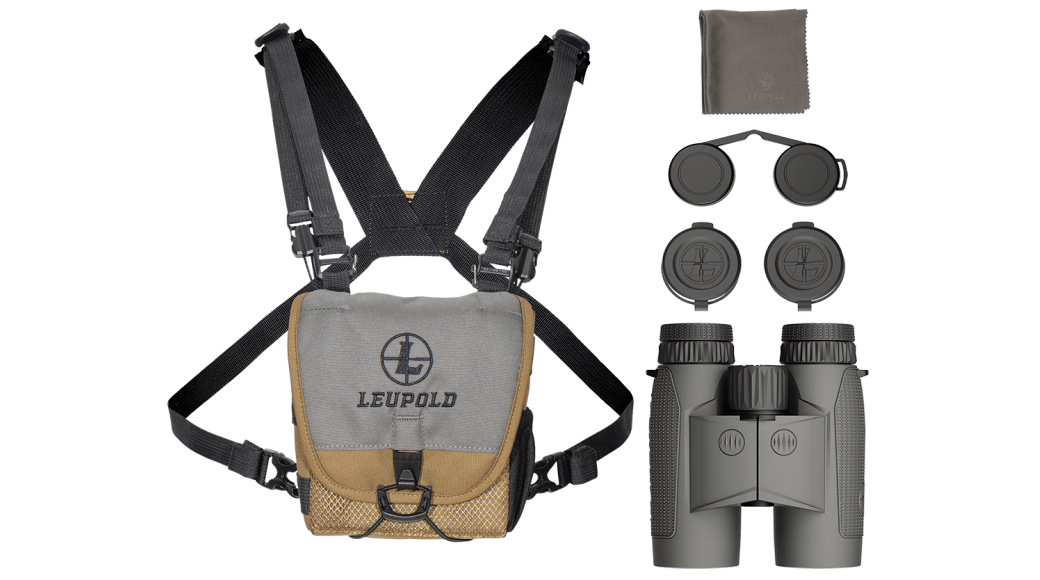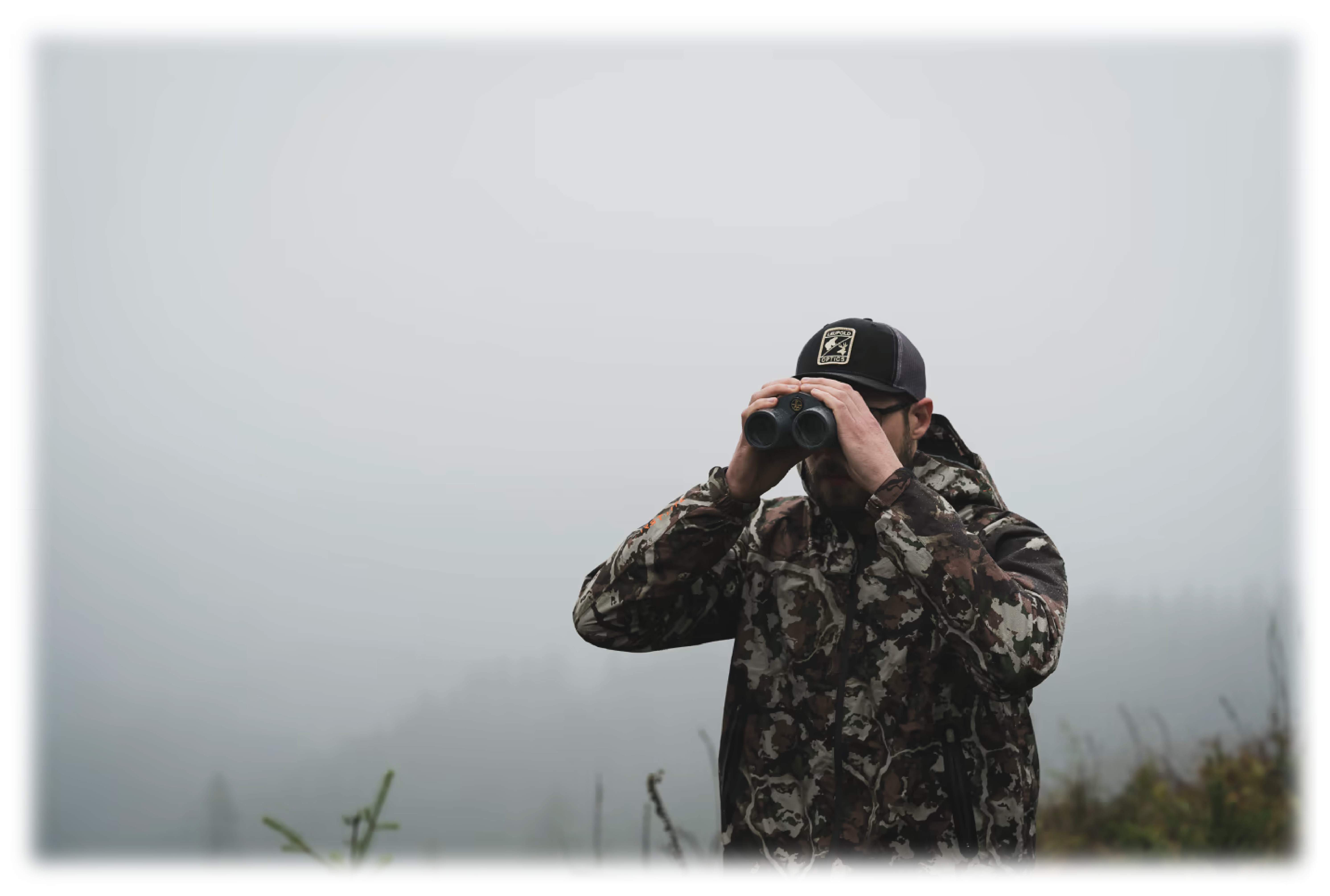“Best Overall: Leupold BX-4 Range TBR/W 10×42”
Given the trend to pack as much electronic power into a laser rangefinding binocular as possible, Leupold’s long-awaited entry in the category is relatively primitive. The new BX-4 Range is essentially Leupold’s RX rangefinding monocular repackaged as a very good binocular. It doesn’t have a Bluetooth connection to a ballistics mobile app. It doesn’t contain a compass or GPS transponder that will help you find your way home.
But the BX-4 Range is one of the most capable LRF binoculars in our test, performing basic ranging and aiming tasks with minimum fuss, and delivering excellent optical clarity as an important bonus, since these devices are used primarily for viewing.









